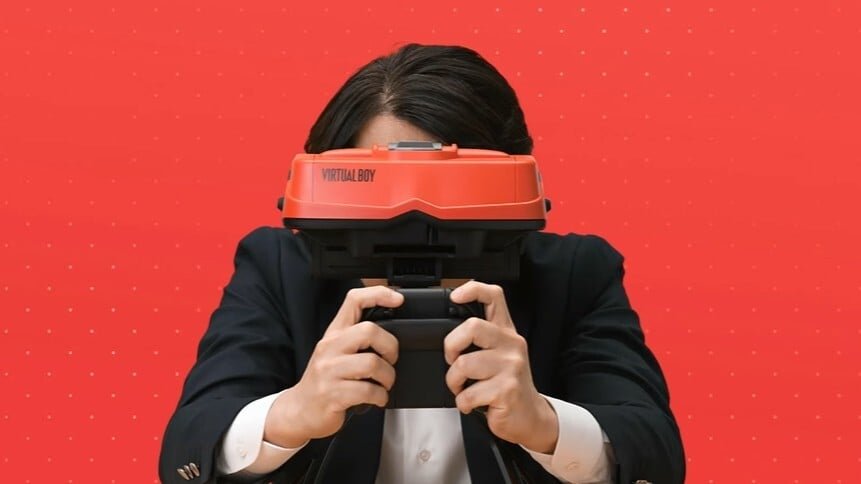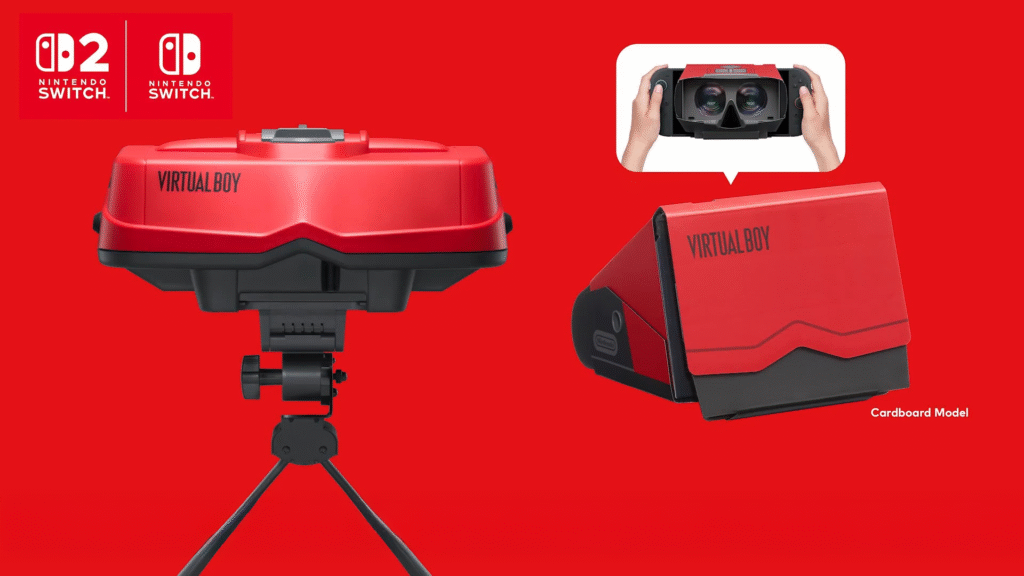1. Introduction: What is the Virtual Boy?
The Nintendo Virtual Boy, released in 1995, was the world’s first dedicated 3D gaming console. Unlike traditional handhelds, the system used a headset-style display with stereoscopic 3D graphics, immersing players in a red-and-black virtual world. Despite its ambition and innovation, the Virtual Boy remains one of Nintendo’s most controversial products — remembered as both a technological pioneer and a commercial failure.

2. Design and Technology
- Head-Mounted Display: Instead of a TV, players looked into a visor-like unit.
- Stereoscopic 3D Graphics: Two LED screens created depth perception, simulating a 3D environment.
- Controller Layout: A unique design with dual D-pads, long before modern dual-analog sticks.
- Portability Myth: Though marketed as portable, the console required a stand and AC adapter, limiting true mobility.
3. Library of Games
The Virtual Boy had a limited library of only 22 officially released games worldwide:
- Popular titles included:
- Mario’s Tennis 🎾
- Virtual Boy Wario Land 🦝
- Red Alarm 🚀
- Teleroboxer 🤖
- Many planned games were canceled due to the system’s short lifespan.

4. Market Performance
- Released in Japan (July 1995) and North America (August 1995).
- Priced around $179.95 USD at launch.
- Discontinued in 1996 after poor sales (~770,000 units worldwide).
- Reasons for failure:
- Limited game library
- High price
- Monochrome red display causing eye strain
- Lack of strong third-party support
5. Legacy & Cultural Impact
- Innovation Ahead of Its Time: The Virtual Boy inspired later developments in VR and AR gaming.
- Collector’s Item: Today, it’s highly sought after by retro gaming enthusiasts.
- Nintendo’s Learning Curve: The console’s failure influenced Nintendo’s future successes with handhelds like the Game Boy Advance, Nintendo DS, and later, the Nintendo Switch.
- Global Nostalgia: From the U.S. to Europe, Japan, and Latin America, the Virtual Boy represents a unique piece of 90s gaming history.
6. Geo-Specific Relevance
- United States & Japan: Primary launch markets; highest sales.
- Europe: Never received an official release, making imports rare and valuable.
- Global Retro Market: Collectors in Asia, South America, and Australia actively trade Virtual Boy consoles and games today.
7. Virtual Boy in 2025 and Beyond
With the rise of VR headsets like Oculus Quest and PlayStation VR, the Virtual Boy is often revisited as the grandfather of virtual reality gaming. Its failure is seen not as the end of innovation, but as a stepping stone toward the immersive experiences gamers enjoy today.
